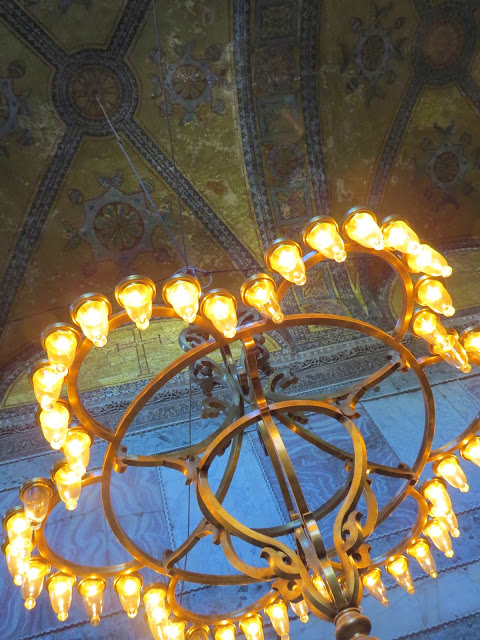Hagia Sophia was constructed as Greek Orthodox basilica in
537 AD. It remained so until 1453, when
the Ottomans sacked Constantinople, and made it their capital. From 1453 to 1931 it was a mosque. It was secularized in 1931 and turned into a
museum.
Hagia Sophia means Holy Wisdom in Greek. It took 10,000 workers to build, and was the largest cathedral on earth for 1000 years. People fainted
dead away when they saw the inside of the dome, and many believed that it must
be held up by angels.
When we saw it 15 years ago it was a dull, drab and dark
space, impressive only for its size.
There was only one small remnant of mosaic in a high corner. We figured that all that had been lovely
about it had been lost, first to the Ottomans, and then to the Venetians, who
carted away many fabulous parts of it during the Fourth Crusade, including the
four bronze horses that now grace St. Mark’s in Venice.
But we learned that the Muslims who took over the Church in
1453 did not destroy the mosaics and other fixed works, but merely covered them
over with plaster. So this visit was filled
with gold and color, even if the space itself remains rather dark and
cavernous.
Even the exterior is brighter and lighter. When we were here last, the area around the structure was a dusty field; now there is a park and a large fountain. Of course, if memory serves, we also walked right in 15 years ago; this time we waited in line for our paid entrance, elbowing our way past throngs of visitors.
These photos are taken from the upper floor where the sultane (queen) and the ladies would observe services.
There are four angels, one at each corner of the apse. After the change from a church to a mosque, their faces were covered up to comply with the Muslim prohibition against human likenesses. The face of this one has been revealed.

















No comments:
Post a Comment